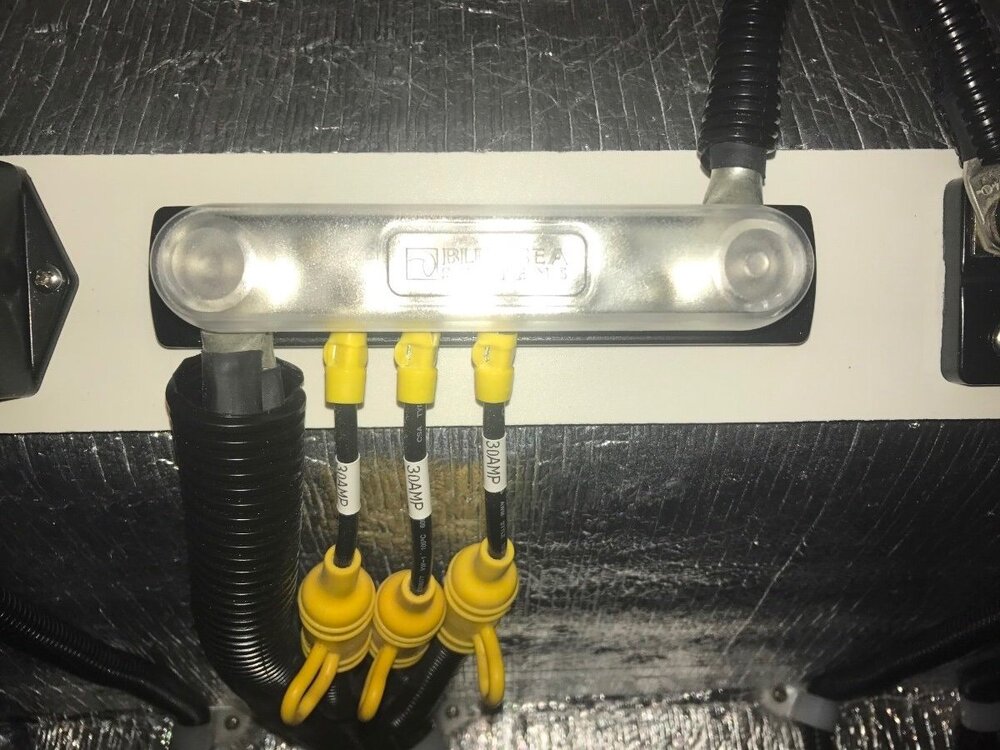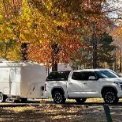Leaderboard
Popular Content
Showing content with the highest reputation since 11/22/2025 in all areas
-
Greetings, All! Well D and I went over to the "dark side" and sold Casa Blanca to a great guy from near Kerrville, TX, David Knight. Please welcome aboard @Kpaladin David into the Oliver family. We're now into our next chapter of RV'ing and starting new adventures with our 2026 Brinkley I 235. It's totally "Victron'ed" out and includes 600A-Hrs of Epoch LiFePO4s and 800W of solar modules. We'll stay in touch! MAX Burner11 points
-
We wanted to wish everyone here a Safe and Great Thanksgiving! Best Regards, Bill and Debbie9 points
-
I spoke with Lew at Alcan about the differences in ride between the 4 and 5 leaf versions of the springs he has sold to Oliver owners. His response was that the 4 and 5 leaf springs have the same ride and spring rate (amount of weight required to be exerted on a spring to deflect it 1”). This makes sense as the 4 leaf versions are merely the 5 leaf with the shortest leaf removed, leaving the identical top 4 leafs in place. Since the shortest leaf doesn’t go to work until the first four leafs reach their limits this makes sense. So, my takeaway from my discussion with him is that both the 4 and 5 leaf versions of his springs have the same ride firmness when towing. The big differences are in lower unsprung weight (4leaf version has one fewer leafs) and higher load capability of the 5 leaf (due to the 5th leaf providing greater load capacity). oh, and over 20,000 miles on my 5 leaf Alcans with no issue of ride harshness or things getting jostled around (tires @50 psi and speeds not in excess of 70mph)7 points
-
7 points
-
Your hull #124 was built before that buss modification was added. All of the early models were fused at the jacks, just like the front jack. You should find an inline fuse in the power wire near the rear jack heads.6 points
-
A friend sent me a link to a YouTube channel — it’s focused on reviewing RVs and helping RV buyers get refunds or assistance / fixes from the manufacturers when they have purchased faulty RV products. (I think she sells a book.) Apparently the Big Three manufacturers own a huge number of “brands” and she says they don’t stand behind their products. At the end of her video, she notes that there are independent companies that are not affiliated with the Big Three brands. Oliver is at the top of her mentions of good products.6 points
-
Be careful with inexpensive tire repair kits. Over the years I have read several reports of the plastic handles failing, impaling the drill in the operators hand. If you've never done a repair, I would suggest practicing on a junk tire. It is a lot harder than it looks to push the drill through an E-rated tire! A battery drill makes it much easier. I've had this set from ARB for about 10 years, and fortunately have only had to use it once: https://ok4wd.com/arb-speedy-seal-tire-repair-kit-arb10000011/5 points
-
Last week at Galveston Island SP, used my tire plug kit to repair where a screw was causing a slow leak. Tried doing it with the tire still mounted, but those Load Range E tires are really stout and ended up having to remove to get more leverage. The Bottle Jack/Jack Stand, VIAIR, DeWalt impact wrench, assorted lug nut sockets and torque limiting impact extension bars all came into play! Upon return home I ordered a heftier tire plug kit and will put the former in the wife’s SUV. Bottom line, BE PREPARED!5 points
-
With approx 11,000 miles logged on our Alcan running gear we have not had any issues with our gear moving around at all. I agree with Mike the trailer seems more planted when towing. I also run 55# tire pressure. I even leave a pair of reading glasses on a small shelf near my bunk and they stay put.5 points
-
5 points
-
5 points
-
My emergency tire service kit includes the following. The reason I carry these items is they take up little space and stow in an easy access location like under the back seat of the truck or in the front tongue box on the Oliver. The Milwaukee charger is mounted on the side wall of our truck bed for anytime access. With that out of the soft case, the impact socket set fits nicely inside the soft case with the light and impact wrench so everything is together. I like having a tire plug kit along because a screw or nail in the tire is the most common cause and as mentioned earlier is the easiest fix and can be done with wheel still mounted to trailer. All these items fit neatly in a small space and are invaluable for getting you safely back on the road in a tire emergency. The most important thing is to try if possible to do an emergency repair away from traffic on a hard level surface. There are other tools you can have along to do a more thorough repair, but this set of tools will get you back on the road and safely to the closest tire shop if needed. This wrench fully charged has enough charge to remove all four wheels on your truck or trailer. The batteries will stay charged for many months in storage. https://www.homedepot.com/p/Milwaukee-M12-FUEL-12V-Li-Ion-Brushless-Cordless-Stubby-1-2-in-Impact-Wrench-Kit-w-2-5-0Ah-1-2-5-Ah-High-Output-Batteries-2563-22-48-11-2450/337134504 The sockets are extra deep so you won't need an extension even with a torque wrench. If needed you can remove the protective sleeve on the socket to fit the lug nut in the wheel. Three sizes to fit most automotive lug nut sizes. https://www.amazon.com/dp/B0C98ZHKQX?ref_=ppx_hzsearch_conn_dt_b_fed_asin_title_7&th=1 12V Milwaukee work light is indispensable in many ways and uses the same battery as the impact wrench. https://www.amazon.com/dp/B0BRZ31ZFS?ref=ppx_yo2ov_dt_b_fed_asin_title Tire plug kits come in many types and sizes. I personally like the mushroom style plugs. https://www.amazon.com/dp/B0FK4SNRBG?ref=ppx_yo2ov_dt_b_fed_asin_title&th=15 points
-
5 points
-
The Summit sourced lug nuts are chrome plated steel, not stainless steel. The OEM Lionshead Jaguar wheels on our 2022 LE2 have steel lug nut inserts. The contact between lug nut and wheel is steel against the lug nut, not lug nut directly against the aluminum. There are stainless steel lug nuts available, but none that are bulge acorn. Show me if you know otherwise. Bulge acorn vs. acorn is irrelevant due to the steel lug inserts on the Lionshead wheels. From what I can see, the contact between the insert and lug is the same whether the acorn nut is the bulge style or not. I don't know if the aluminum wheels on other year models had steel lug inserts. If not, then use the bulge acorn style. If you want to use stainless steel acorn (non -bulge) lug nuts, then keep in mind there's a risk of galling, which effectively welds the lug nut to the stud. Avoid use of impact tools to remove/replace the lug nuts to mitigate this risk. Steve5 points
-
This issue has been a long running one. Some time ago I copie Frank's post: OE2 LUG NUTS: Frank 😄 For anyone getting replacement lug nuts, make sure you get the proper type for aluminum wheels. The correct ones are the “bulge acorn” type which have a larger conical seating surface for use on aluminum wheels. Aluminum wheels are softer than steel wheels and require the larger seating surface. The ones installed by Oliver are the correct bulge acorn type so get the same style. “Acorn” type have a smaller conical face and are for steel rims. JPR: COMPARE SPECIFICATIONS! 24 required. I believe it was MaxBurner that turned me on th these chrome plated lug nuts from Summit Racing. My regular sockets work well with them and no interference with the wheel rims on our 2019.5 points
-
We bought our first Travel Trailer in early 2008. It was Oliver Hull #026, one of the first group of 46 Oliver Elites built between 2007 and 2009. As some of our members probably already know, the trailer line shut down in late 2009 due to a dramatic sag in the economy. No employees were laid off, instead they were moved into other areas of Oliver such as the tub line. Standard equipment on one of the original Elites included a satellite dish on the roof, an electric cord reel that automatically rewound the power cord back into the body, air conditioner, heater, television, audio system, microwave, refrigerator, outside retractable awning, bathroom and three electric leveling (yes, leveling) jacks. Some of these items had optional availability on other fiberglass trailers (Casita, Bigfoot, Escape, etc.) but not one of those manufacturers had all of them as standard equipment and a good many items on that list were not even available at any cost. All this on a trailer that was selling for under $30K. The electric leveling jacks were the absolute stand out among the fiberglass trailer crowd. No other fiberglass trailer manufacturer even offered them. But with them, you could stabilize and level your trailer with the touch of only three buttons. And, as Sherry stated, the rear jack switches were located near each tire and the jacks could be observed while operating them. As the new Elite II builds were coming together it was realized that the outside body molds were different from the ones in the old Elite and the area where the Elite rear jack switches had been located was completely different and there was no place for the switches to go. They asked where they should be mounted and I had them place mine in waterproof boxes built into the sides of the trailer. I also had them extend the wiring from those switches into the left and right areas of the overhead cabinet in the rear. After delivery, I used that extra wiring to make remote inside switches to control the rear jacks. I did the same for the front jack. Now we can comfortably setup or breakdown in the rain using the controls on the inside. Sometime in early 2015, about a year after we had taken possession of the first Oliver Elite II produced in 2014 (Hull # 050), we were at the factory for some reason. John Oliver, (Jim and Evon’s youngest and only child) who was over production of the trailer line at the time, approached me and asked my opinion on a modification they were planning. The placement of the rear jack switches had always created an issue and their new plan was to move them to the front of the trailer where they would be near the front jack. “Now”, he said, “all the jacks can be controlled from a central area. What do you think?” My reply was that I thought it was a “...terrible idea.” I explained that you need to be able to observe the jack while operating it. He disagreed. I told him that I would hate it and I figured the future owners would hate it and the company would have to eventually backtrack and move them back to the rear. It took a while for them to do something about it but I can’t tell you how many times I was questioned by owners as to WHO thought it would be a good idea to put those switches at the FRONT of the trailer. And now you know the rest of the story...5 points
-
MAX - please do not be a stranger (well, at least any "stranger" than you already are 😇). I'm sure that you didn't let the pups go with that fine Ollie of yours! DAVID - you've got a really nice Oliver there. We'd be happy to help in any way we can. Bill5 points
-
No, a voltage regulator is not advised for the Starlink mini because it already operates from 12 to 48 volts DC. As was the jest of this thread, it's actually necessary to boost the voltage if using the supplied long cord in a 12 volt system due to the voltage drop. When I started this thread, I had one of the first Minis and there were no accessories or aftermarket options to allow it to work on 12 volts without either boosting the voltage, or shortening the cord. So I utilized a robust Vctron voltage booster that's wired to turn-on whenever the Mini is plugged in. I still use that system and, IMHO, it's still the best and simplist way to go. Of course, you can always use the supplied AC adapter that puts out 48 volts DC if you have an inverter, but that will suck down your battery a lot faster. These days there are more options and shorter cords if your mini is going to be mounted close by. However, it's often necessary to move the Mini further away for it to have a clear sky view, and in such case you need to boost the voltage to account for voltage drop from the longer cord. Some people use a POE injector (Power Over Ethernet) that can supply power through an ethernet cable that is plugged into the auxiliary ethernet port. Others use portable battery packs. I make snap-in re-chargeable battery packs for taking my mini to other campsites and such, but they have limited battery life. Because the Mini has a built in Router, it looses WiFi signal, and thus internet speed, the farther away it is. Mine is hopelessly slow if I use the entire cord length. So a great accessory is the Starlink Mini Router. They are inexpensive, and you won't often need it. But when you have a situation where your Mini is placed farther away for a clear sky view, then the router will save your day! See my post "The New Starlink Mii Router, for what ails you." So you will need to decide how you want to power your Mini based on how you plan to mount it and use it. Then you can make an informed decision on how to power it. Hope that helps! Geoff5 points
-
4 points
-
Casita did a pretty good job with this new trailer. Tank sizes, especially black tank, dry bath and large fridge are all good selling points. At about half the price of an Oliver this is going to provide some competition. I hope Oliver is working on their next trailer! Mike4 points
-
I will give Casita a little credit. They are certainly taking “little bites” out of the fiber glass travel trailer market for folks who just cannot justify 90-100k for an Oliver. Smart forward thinking with their R&D folks with a larger/longer camper and dry bath to boot. And oh gee, how interesting? Casita must be listening to their customers! 🤔 Might be just me, But I bet they sell quite a few baskets of those eggs! 😄 https://casitatraveltrailers.com/lc/4 points
-
Spring rating and spring capacity together determine how the road conditions impact the load. For a given load, a higher rated suspension will have less travel than a softer one. To put this at an extreme, if we go with an infinately strong suspension, say a block of wood, an input from the road will imediately be felt in the cab. This is not what we want. On the other end of the extreme, if we have a too soft suspension, the axle will bang the frame with every input. We don't want that either. And for this reason, all the springs and shocks being used by our owners fall between the two stupid extremes above. Hence they work. The root cause of these discussions as admitted by three Dexter Tech's to me that the original OEM springs being contineously loaded were under designed. That's why so many have prematurly failed. The good news is that many of us have upgraded our springs to higher rated ones. I personally recommend this to ALL OE2 owners who still have their OEM 1750 Dexters. So for those of us who have already done so, bascally all we are really fretting about is the personal selection of different options. It is Physics that if you have a stiffer suspension, you will get less spring travel. For some that is greatly needed. But if an owner of several years has zero witness marks on their frame and axle U-bolts, then likely they just need to address the under design issue and go with a compromise spring rate. As Ronbrink mentioned above, your shocks will wear in a bit and may help some. With the upgrades you have your rig is set up for great off road service. There is only one thing I can think of to amelerate your situtation. You may want to check YOUR tire MFG Pressure/Load chart for recommended tire pressure at your actual axle loading. If you don't know that number, please hit the scales. At 55 PSI, I would wager that you are well over your tire MFG recommended pressure. I recommend 40 to 45 tops for 95% of our OE2 owners weights. GJ4 points
-
Same here with 15,000 mi since install early this year :)4 points
-
We reconfigured our OTT in the same manner and have logged over 12k miles since. Concur w/ @Mike and Carol, the rig feels solid and tracks true over various terrain conditions. @Geronimo John and I ventured over several dozens of USFS roads in rough and muddy conditions earlier this year while searching around and met @jd1923 w/o any noticeable relocation of contents inside the cabin. Rugged terrain should be transited slowly and surely, IMO. I would not have chose to transit those USFS roads without the suspension upgrades you've done to your Ollie. just my $0.02... Be safe out there...4 points
-
We haven’t had any content shifting issues. My impression so far is that the trailer seems more sure footed with the ALCANs. Mike4 points
-
Other than adding a device to change 120 volts to 12 volts, as far as I know you will have to put the (or at least one 12 volt battery back into the Ollie in order to get 12 volts to the water pump (or anything else that runs off 12 volts for that matter). As long as it is charged up, basically any old 12 volt battery will work for your purpose. I always have one or two 12 volt AGM batteries laying around in order to use with a small trolling motor I have. This would be more than adequate to power that water pump. Unfortunately, you are in Pittsburgh and I'm in the mountains of western North Carolina. Good luck! Bill4 points
-
I carry pretty much the same roadside kit. I also carry a Dewalt 20V air compressor. GJ4 points
-
Welcome to the dark side Art!😜4 points
-
Like BIll, I don’t know of anyone who has moved their switches. If they are in the back you would be able to monitor the jack on that side but not the other side. I prefer them on the front so I can use the bubble level on the front jack to get the trailer approximately level. I’ve found that when retracting the jacks I estimate about an inch per second, then I do a visual check before finishing. Mike4 points
-
So true. The former are solid plastic and better suited for the passenger tires on the SUV. The new tools are solid aluminum and a much better fit for the intended purpose. Definitely shy away from the cheap plastic ones that can’t withstand the excessive forces needed for our trailer tires!3 points
-
No tv at all in our OLEll. We have Starlink for communication and can get tv content on our laptops if desired.3 points
-
With all other loads turned off (as to not overload the Jackery) just hook your Jackery neg to the ground buss with all the yellow wires, and the Jackery positive to the big red wire input of your 12 volt fuse panel . Your pump will then operate as normal. Otherwise you will have to cut the wire splice at the pump to feed it.3 points
-
Another possible cause: If an awning is repeatedly subjected to water weight more on one side than the other, it will streach a little each time. Basically the rectangular shape of the awning is asmetrically streached into a trapazoid. The trapazoid will walk towards the streched side. Ours was 1/4" per revolution. At some point the awning will be against the edge guide and jamb. Assisted pull-out as you suggested is necessary. A bigger guy/lady on the crank without the pullout assist is a bad idea. In our case, I had a habit of having the awning support pole near the entry door about a foot higher than the back support pole. My rationale was I wanted the rain to drain towards the back of the trailer vs. up by the entry door end. Great Idea. But.... I got to buy a new rectangular shaped awning. Only good news is that the awning fabric makes a good entry mat.3 points
-
3 points
-
Steve: Thanks for the correction. I updated my post accordingly to "Chrome Plated" steel. Our 2018 OTT rims came with the “bulge acorn” style. Replaced them with the same style as recommended by Frank and by MaxBurner sold by Summit. They have worked very well and my standard sockets work with them. I do use a Dewalt 20V impact to remove and snug up. But for the final three tightening stages by torque wrench. (Retorque in three stages (60, 80 and 95/100 ft-#). GJ3 points
-
I don't know if I'm in the minority or not - but - I happen to like the rear jack switches located on the front of my Ollie. Unlike Mike, I found the bubble level that is on the top of the front jack to be virtually useless. So, I installed three small bubble levels on or near the front of the Ollie. All three are right at the "belly" line where the top and bottom shells are joined. The first one is just above the front jack, the second is basically under the bath window and the third near the front door. These levels are much more accurate and sensitive than the one on the front jack and can be observed with a simple step in one direction or the other. I also didn't hurt that they were very inexpensive and are attached with exterior double sided tape. Finally, even though I very seldom use the rear jacks, when I do I use 6x6 blocks under those jacks. This makes positioning easy (in most cases) with one quick look to make sure that the jack and block are properly aliened. Perhaps, the "perfect solution would be to have three way switches so that these switches could be placed in BOTH the front and the rear which would allow for the use in either location depending on the situation. Having thought about this solution, I'm marginally surprised that ScubaRx has not done this type of mod (note that if you ever get a chance to see ALL of the switches that he and Tali have in their Ollie, you will see what I mean here). Bill3 points
-
***Long Post*** XPLOR Hull #634 Victron 3000 watt inverter, Victron 12v DC to DC charger and Epoch lithium battery upgrade. Note: To discuss options and pricing, please contact Jordan Hall at Inverter Services, White House, Tenn. Our OEM AGM batteries were getting long in the tooth and it was time to upgrade our batteries to a complete lithium battery system on our 2020 Oliver LE2. Our good friend, and former Oliver owner Jim Posey, highly recommended we speak with Inverter Services in White House, Tennessee. I called and spoke with Service Manager Jordan Hall and discussed our needs and options. Jordan and his team at Inverter Services were excellent to work with and have a lot of experience working on Oliver travel trailers. Our tech/installer, Easton Ford, kept us updated on our install progress with photos and discussions as needed. We found Easton to be extremely detail-oriented and dialed in and focused on our project. We were originally scheduled to have this work done next March. After returning from our 54 day New England and Canada trip, I decided to call Inverter Services and ask if they had any cancellations. They did and we immediately took the cancellation. They are typically booked 6-7 months out. So we hitched op Oliver and headed to White House, Tenn to leave our Oliver with the team for 2 weeks. Important note: Inverter Services supports the RV and Marine industry in ALL things lithium battery and electronics. This is one of the most detailed and thorough, cutting-edge companies we have ever done business with. I chose Inverter Services to do this install because this is not my area of expertise and it absolutely is theirs. These guys are experts in their field and I admittedly am still in the learning process. Based on our excellent experience, we highly recommend Inverter Services in White House, Tenn if you are considering a lithium upgrade. We chose all Epoch & Victron following products for this install. (2) Epoch 300ah lithium batteries (internal heating elements) -https://www.epochbatteries.com/.../12v-300ah-heated... *Victron MultiPlus-II 3000w Inverter/charger *Victron GX 70 Touch Screen *Victron Smart Solar MPPT *Victron Orion XS DC-DC Battery Charger **We also had the RV Soft Start installed on our Truma Aventa AC. Inverter Services provides tech guidance/support/firmware updates as long as we own our Oliver. I cannot stress enough the pride this company takes in their work. As I think most would agree, Victron components are a class all their own and leaders in the Marine and RV industry. Post install, we have on board 600ah of lithium battery power, and with our extra 90W Zamp panel now configured to lithium, we have approx 410 watts of solar. This will certainly give us more options on the roads less traveled and boondocking. Still lots to learn on this new system. Now having the 12v DC -DC charger I don’t think we will see a need to carry a generator any longer. Thanks to all those on the forum who made the Lithium upgrade happen. ⚡️ The information gleaned here helped me decide the direction I wanted to take this install. ⚡️Happy Camping and Safe Travels! ⚡️ A few install pics- The Victron GX 70 touch screen fit the existing opening with no cutting or trimming of the fiberglass. Very happy with the touch screen and the Victron app. We can set the screen to time out at 5 or 10 min or longer and then go dark for sleep mode. Zamp 90W suitcase. 12v DC to DC Andersen connector. On our way home we camped at Cumberland Mountain SP in Tenn and gave our new system a shake down. It’s nice to not have to plug in. 😊3 points
-
@Kpaladin, welcome! Congrats on your “new” Oliver. We’re just down the road near Boerne. Hope to meet sometime soon. Mike3 points
-
Great talking with you last night, David! Your new Victron upgrades look flawlessly integrated into EXPLOR -- they will serve you and Kathy well as y'all continue making future OTT adventures. Very impressive. As goes with all in the OTT community -- please reach out to us here in NM, as @Geronimo John and others can attest, we've got a nice flat area with 30Amps/fresh well water/and dump station for over-nighting in the Great Southwest USA! Nothing like burning game meat on the Green Egg and quaffing a few cold ones with friends. Safe travels, all and Happy (early) Thanksgiving to all y'all!3 points
-
This is a confusing topic even for some electricians, but adding a new 120 volt, 30 amp RV outlet in your garage, or outside, will require GFCI protection per 2023 NEC. However, adding a building extension usually does not require that you update existing wire to code. That would be up to your particular jurisdiction. Most of the common home panel manufactures offer 120 volt, 30 amp GFCI breakers for around $60. Check your panel label because many have interchangeable breakers like Murry and Siemens or Eaton and Cutler Hammer. It's also acceptable to use one leg of a 240 volt GFCI breaker to feed a 120 volt circuit.3 points
-
I thought I read something a while back that the new code requires GFCI protection in a residential setting but RV parks were exempt. Don't have a new code book but will see what I can find. Edit: looks like the updated NEC 2023 code 210.8(A) does include any 125 through 250 volt outlets installed in a garage or accessory building be GFCI protected. The code covering RV parks was not updated so only pedestal outlets 20 amp and under are still required to be GFCI protected. Contact your local construction services dept to see if they've even adopted the new code or not, and if they have, I would just install a 30 amp single pole GFCI breaker for that outlet.3 points
-
Tony - I agree - this should not be a difficult mod. However, I do not recall any post from the past that talked about actually doing this. Good luck. Bill3 points
-
Although you likely have an electrical-related issue, the stabilizers jacks can also be manually operated.3 points
-
3 points
-
David Knight, welcome to the group. You definitely got a well cared for Oliver, with lots of upgrades. Happy Camping from Hull #1045, Jolli Olli.2 points
-
Art, Best of Luck. Been lucky to camp next to 3 Brinkley's over the past couple years. They all spoke highly of their trailers. So happy camping. Safe travels on your adventures.2 points
-
David, Nice looking rig and Welcome to the Oliver family! Art, Congrats on the new Brinkley, very nice camper! Please stay in touch!2 points
-
2 points
-
I share your frustration. The product very cleaverly SOLVES the humidity issues, and gives owners greater flexability in operation of their A/C as well. However, there likely are more than a few reasons for the majority of owners to "wait and see". A big one, as I posted in the previous thread, is not knowing how numerous hard shut down and restart cycles per hour will be tolerated by the existing control boards out there. Or probable warranty impacts on new units. Not being able and willing to mod their unit as some have done with the Houghtons for about $50 in parts. Not wanting to add another complicated device in their lives. Not being able to install the device, or trouble shoot it should it fail. My hope is that manufacturers get the message that they need to provide the remote T-stat and fan control features as standard features. Oh, and in my dream state, design the units to be able to use an internal condensate drain system! Please don't wake me up. GJ2 points
-
Recent Achievements












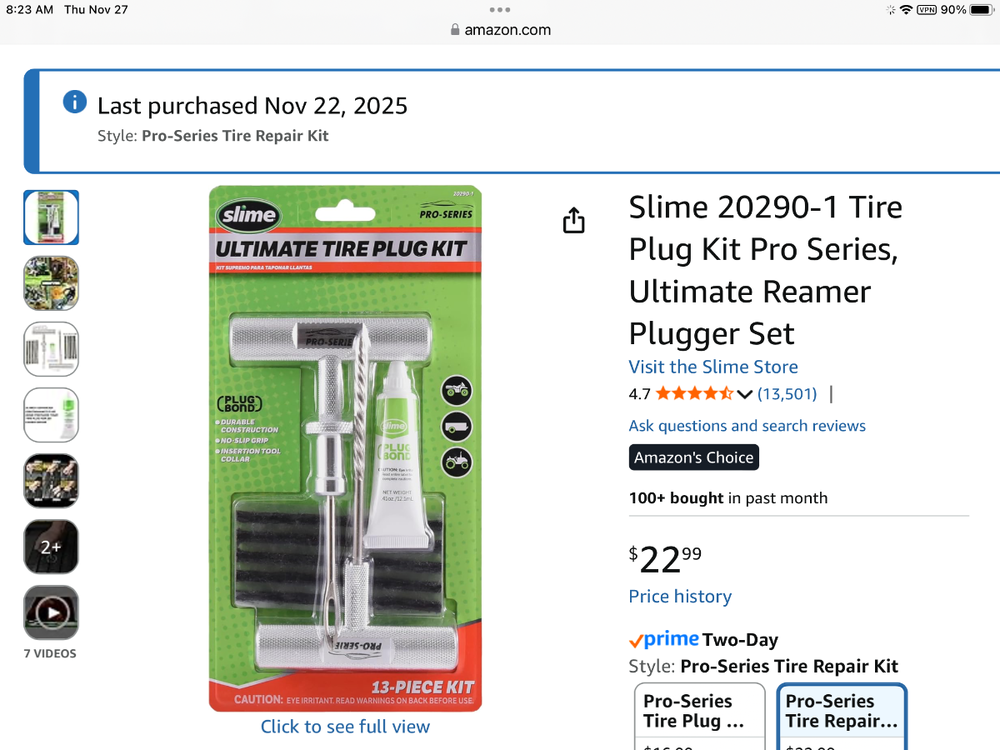


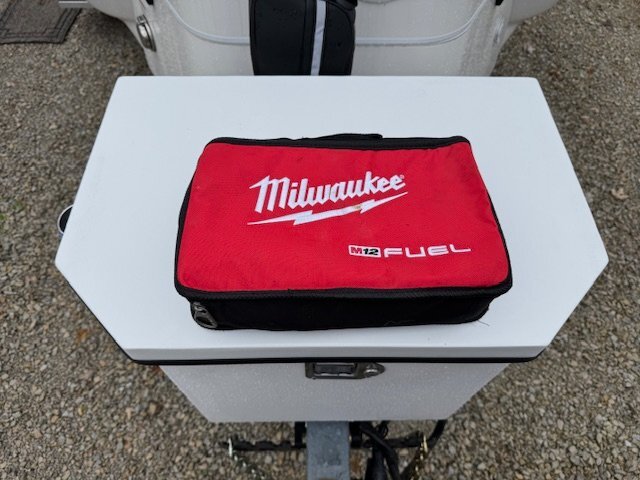
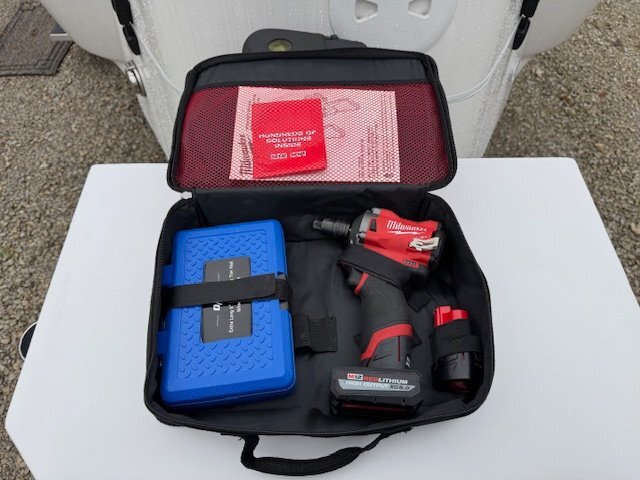
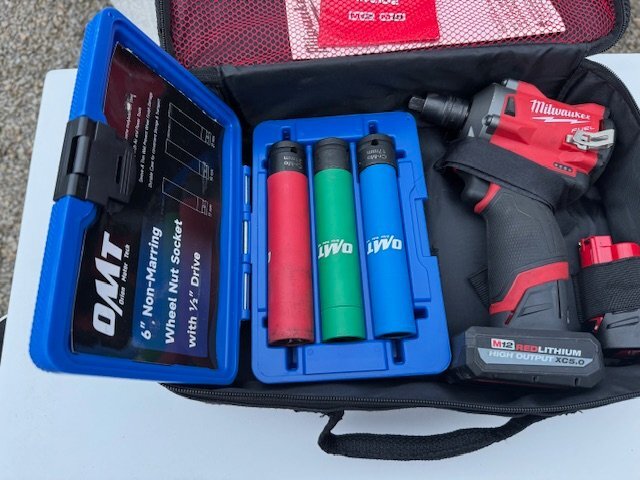






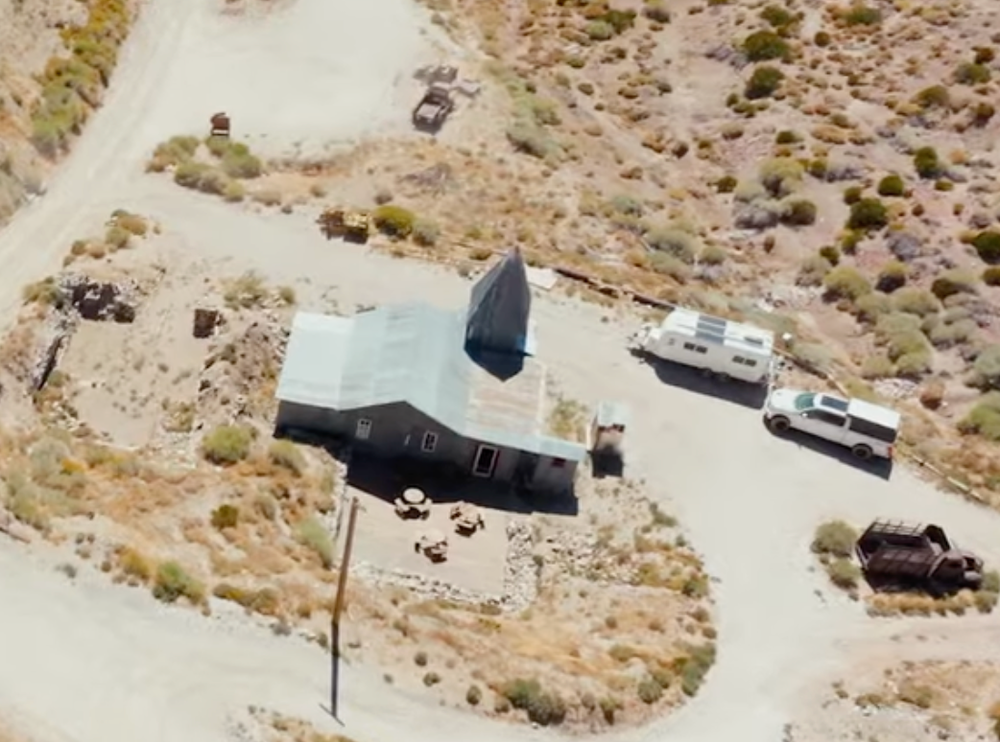
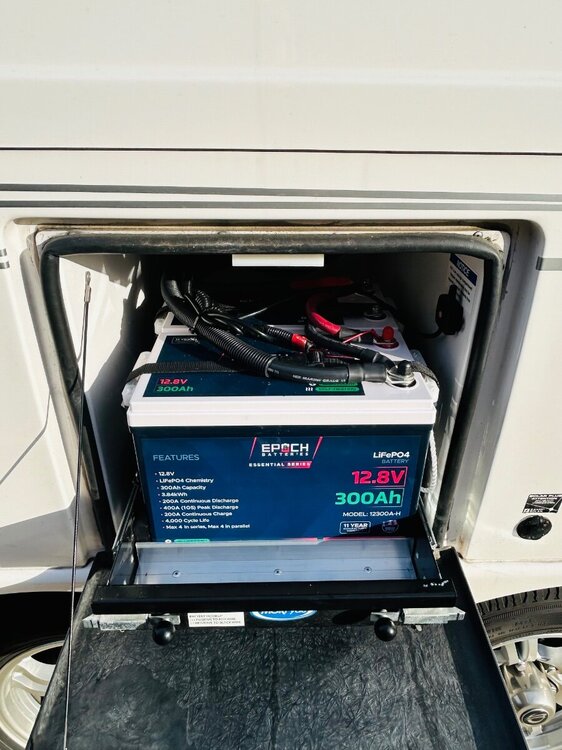

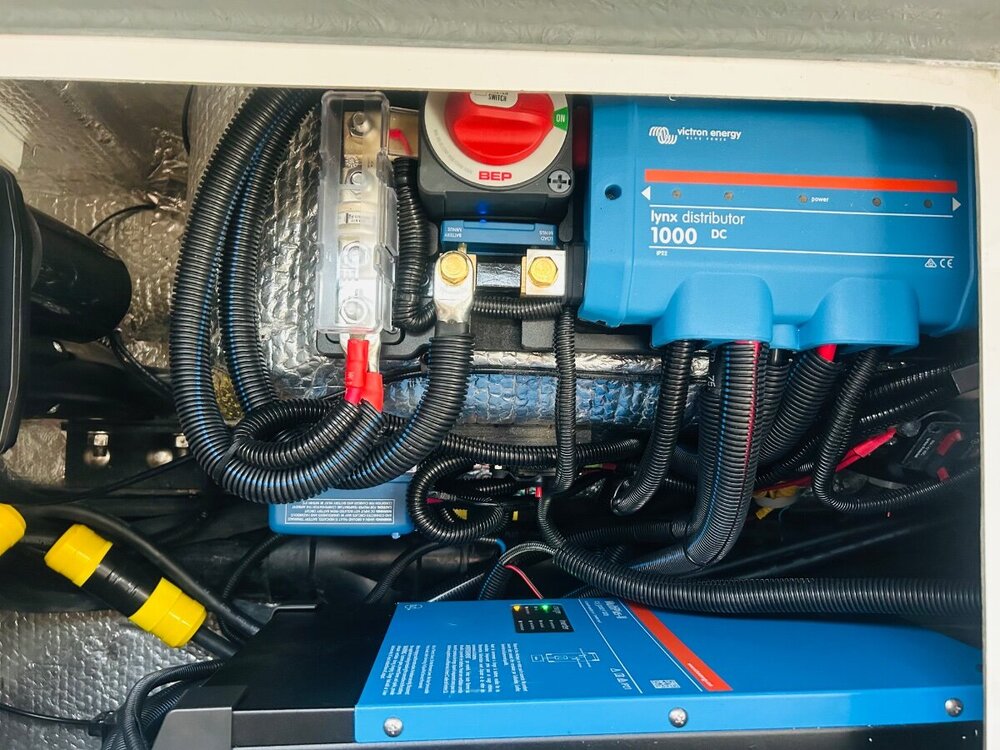
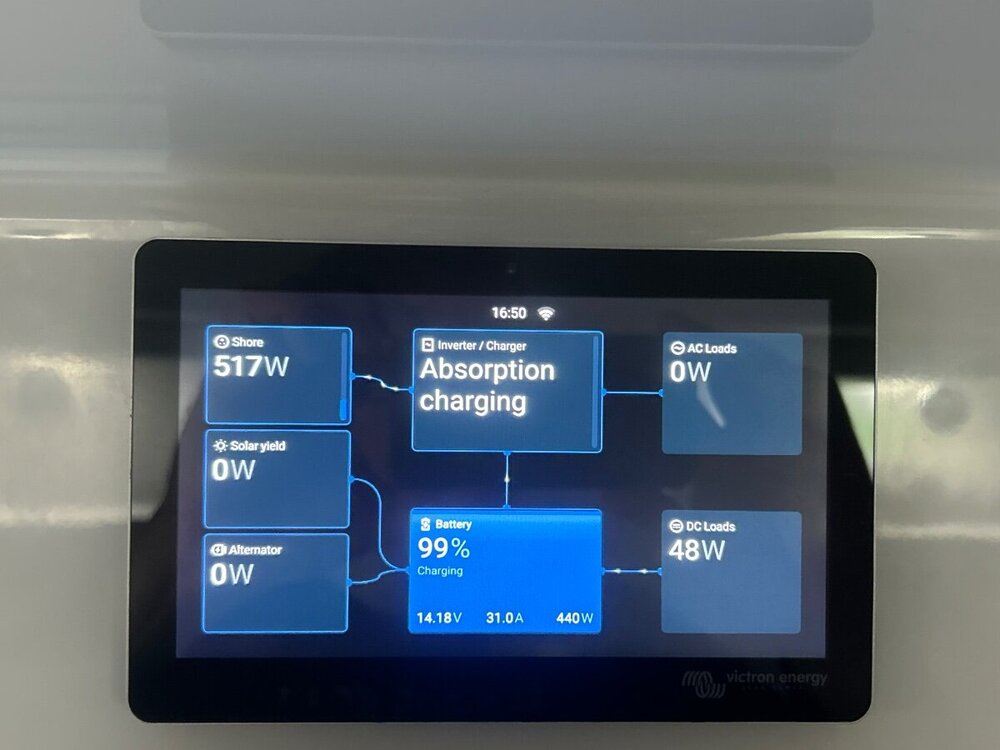
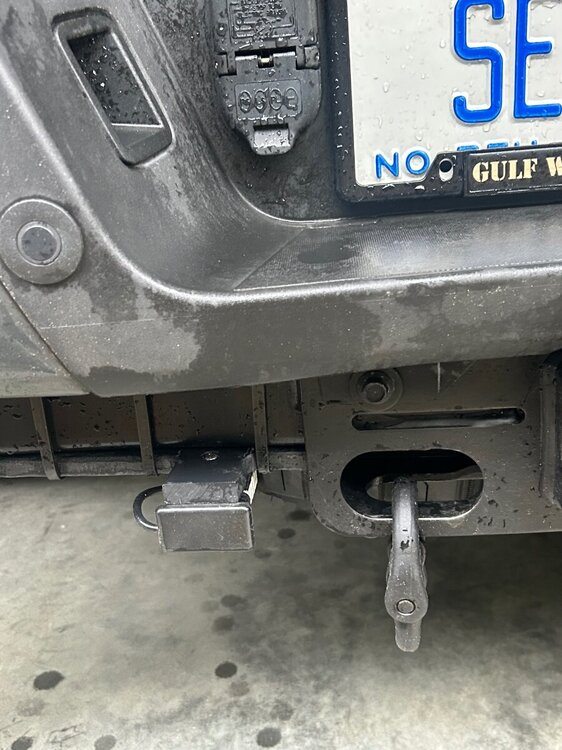
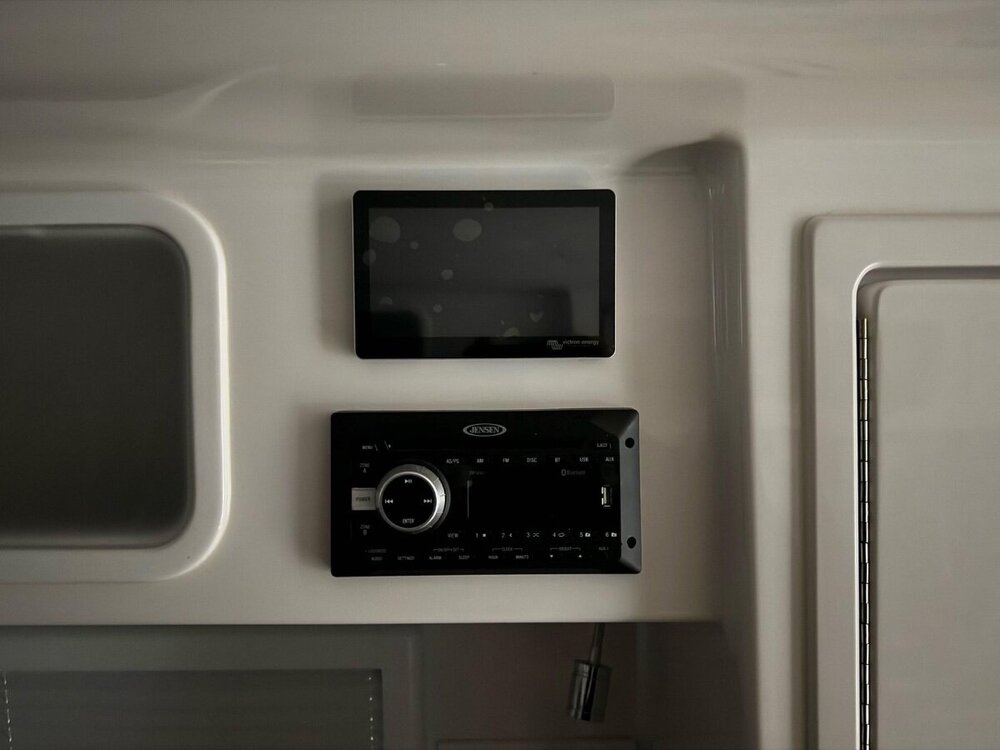
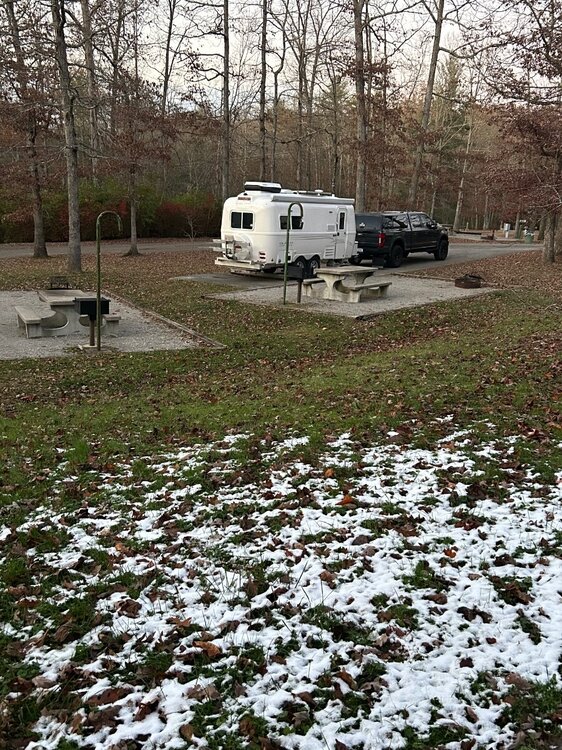
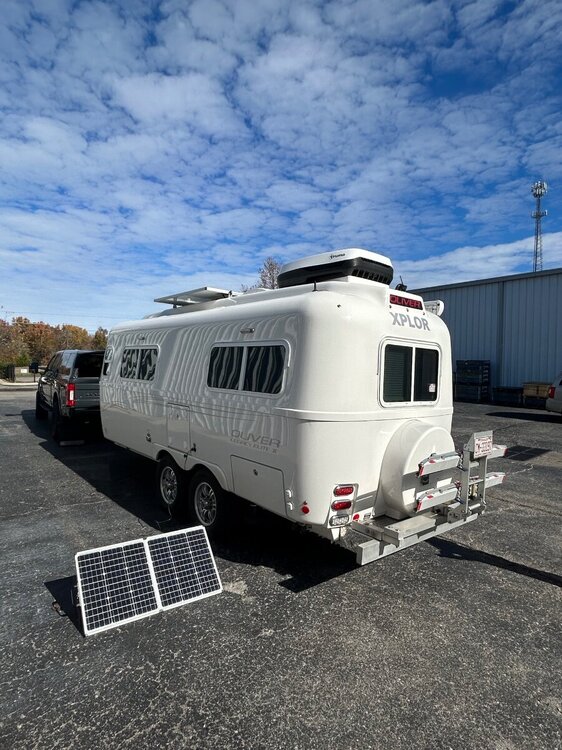
.thumb.jpg.e34bf01ef7f7d5e99ad31856d45afbeb.jpg)

